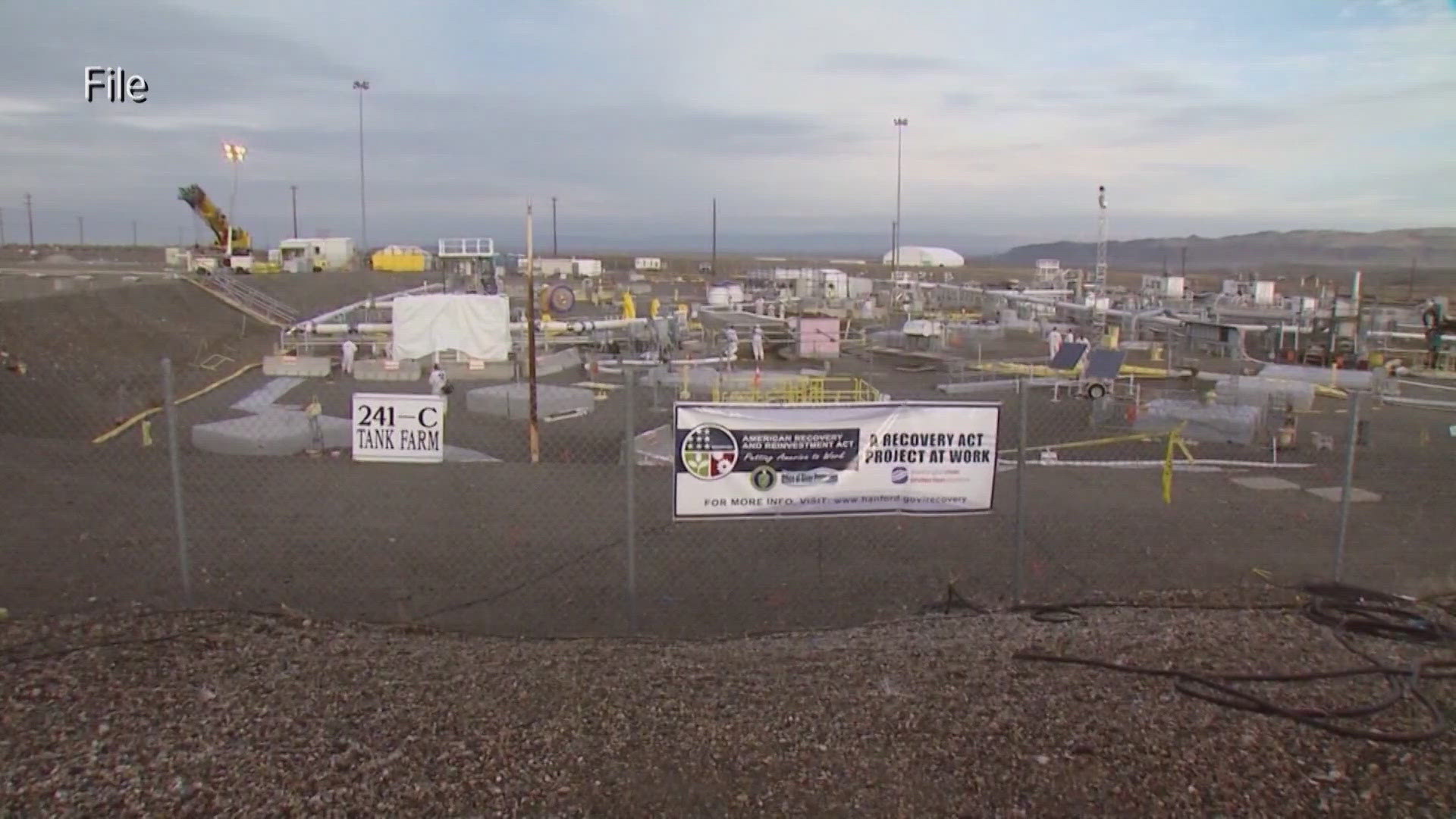SPOKANE, Wash. — Spokane Mayor Lisa Brown wrote a letter to multiple state and federal agencies opposing plans that could transport liquid radioactive waste through the city via trucks.
According to the City of Spokane, Brown wrote a letter to the U.S. Department of Energy, U.S. Environmental Protection Action and the State of Washington opposing plans that "could send millions of gallons of hazardous waste through the City of Spokane."
The City said hazardous waste would be shipped through Spokane from the Hanford Nuclear Site to Andrews, Texas and Clive, Utah in liquid form inside government-regulated totes.
"It is the mayor’s understanding that should an initial transport of 2,000 gallons be successful, these agencies plan to transport millions more gallons of hazardous liquid waste through Spokane by rail or truck," the city said in a press release sent to KREM 2 Wednesday afternoon.
The city said plans were made to send shipments through Spokane after Oregon expressed concerns about potential risks.
“I am extremely disappointed to learn that, following the expression of serious concerns by our friends from the State of Oregon and the [Confederated Tribes of the Umatilla Indian Reservation], your agencies shifted your planned route to go through Spokane,” Brown wrote in the letter.
Brown also said the plans were made without an updated Environmental Impact Statement and without consultation with Spokane's Office of Emergency Management and first responders.
“Furthermore, the communities closest to the interstate and rail corridors in our city are ones that have already borne the weight of historic discrimination and disinvestment. The potential negative consequences of this plan would disproportionately impact some of our most marginalized communities,” Brown said. “On behalf of the citizens of Spokane, and in defense of our beautiful natural spaces and vibrant urban setting, I urge you to reconsider this decision.”
Hanford site spokesman for the U.S. Department of Energy, Ed Dawson, says that this exact process happened back in 2017, however, the amount that was shipped was 3 gallons versus the now 2 thousand that they want to move.
All of the Pacific Northwest leaders speaking up about this demonstration project say that they are fully supportive of getting the toxic waste out of Hanford, however they don't support it coming through their respective communities in liquid form.
Dawson says that the U.S. Department of Energy is working on figuring out different ways to get this toxic waste out of Hanford to give as many different options as possible in the future as instructed by the U.S. Government Accountability Office.
Pre-treatment for the project is set to start by the end of the year and the transportation should happen sometime in 2025. Dawson tells KREM 2 that a planned route for this 2,000-gallon project has not been finalized just yet.
"Bottom line is that we want to make sure that we are doing our due diligence we want to make sure that we are doing things in a safe and compliant manner all throughout that process," says Dawson.
The Nuclear Safety and Emergency Preparedness Division in Salem, Oregon, released the following statement:
"The Hanford “Test Bed Initiative” is an important project to test the engineering, safety, and legal systems involved in the disposal of Hanford tank waste out of the northwest. However, Oregon is opposed to shipping of liquid tank waste through our state. While the test bed initiative is only 2,000 gallons, Oregon is more concerned with future shipping campaigns that could transport millions of gallons of liquid tank waste from Hanford for disposal at locations elsewhere in our country. Before decisions are made regarding offsite transportation of Hanford waste, Oregon communities should be informed and engaged in an open and transparent planning process, and our emergency responders should be trained and prepared for a shipping campaign. These principles should apply to communities in other states, as well, though of course we do not speak for any other state. While Oregon supports offsite disposal for treated Hanford tank waste, the waste should be solidified on-site at Hanford first. Solidifying waste at Hanford before offsite transportation is safer and reduces risks to our environment and our public."
Spokane County Commissioner Amber Waldref also released the following statement on the matter:
"I am thankful for the cleanup of radioactive waste at Hanford to protect future generations and the Columbia River. I support removing waste from Hanford to be disposed of safely, but shipping waste in a liquid form is a risk for residents of Spokane County, especially highly impacted communities along I-90. I hope WA State Ecology and US Dept of Energy will agree to sit down with local elected leaders to discuss concerns and explore alternatives."
The Confederated Tribes of the Umatilla Indian Reservation also released the following statement:
“The Confederated Tribes of the Umatilla Indian Reservation supports the removal of these wastes from the Hanford site and their disposal in the licensed facility in Andrews, Texas, which is consistent with the tribe’s policy regarding the Hanford site. However, it does not support the shipment of that waste in liquid form. There are companies that are capable of grouting those wastes into a solid cementitious form at the Hanford site prior to shipment. Ensuring this waste’s safe transportation off Hanford and across tribal ceded lands in the Columbia Basin is critical. Transporting waste in liquid form poses an unacceptable risk of spills and harm to the environment, First Foods, and our citizens. It is especially disappointing given that shipping waste in a grouted, immobile, solid form is a viable and safer option. Although the Test Bed Initiative is a relatively small (up to 2,000 gallons) demonstration project, it lays a foundational roadmap for millions of gallons of hazardous waste to be transported across the Columbia Basin, and therefore has long term implications for treaty-reserved resources, cultural resources, First Foods, and human health and safety.”

